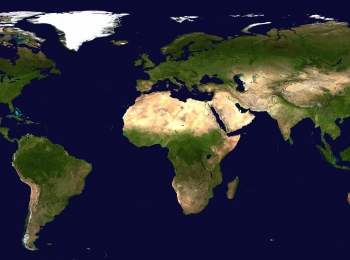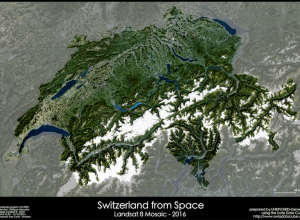MapX : A global open platform to manage, analyze and visualize environmental geospatial data
Introduction
We are undoubtedly living in a connected World. Out of a population of 7.5 billions, more than 50% of people have access to Internet, more than 40% are active social media users, about 70% are unique mobile users, and almost 40% are active mobile social media users. This presents a massive opportunity for engagement, education, and the use of crowd-sourced data. In the last 30 years, the number of satellites launched per year has grown from a few to more than 300. In 2016, 11 billions sensors were connected to Internet, and this figure might increase significantly by 2030, which is the date for achieving the Sustainable Development Goals (SDGs).
Unfortunately, this Big data comes with numerous core problems to solve, and especially in the challenging context of low- and middle-income countries. First, the data is often extensively fragmented or dispersed across multiple ministries, initiatives or databases that are not always interoperable. Second, the data is often locked down in PDF documents or in proprietary files. Third, information is often not inter-comparable, due to inconsistent data monitoring and analytical methods. Fourth, data is often duplicated, and siloed at the same time, which has significant cost implications. Fifth, the data that is generated requires in many cases complex analysis and interpretation. Finally, some of the data is contested or not trusted by certain stakeholders, with a perception of bias. The outcome of these issues is the creation of significant information asymmetries among stakeholders. In the extractives sector, for example, information asymmetries are frequently exploited by stakeholders (essentially Government and the private sector) during contract negotiations to obtain favorable contract terms. These issues are strengthened by the fact that geospatial data are not always free, that not all stakeholders have a culture of geospatial data use, and that the generated data have a high heterogeneity in terms of geographical scale.
However, this heterogeneity also raises interesting opportunities. For example, global products can fill the gap of uncomplete or missing data in some areas, and national data can support validation of global products in national contexts. To address these challenges and benefit from these opportunities we need to transform raw data into wisdom in order to inform decisions and investments, and to empower consumers and citizens. One challenge is to keep this transformation process up-to-date.
MapX concept
In this context, the Institute for Environmental Sciences, through its partnership with UNEP/GRID-Geneva (www.unepgrid.ch), and UN Environment, developed MapX (www.mapx.org and app.mapx.org), an online platform for managing geospatial data on natural resources and the environment. Field applications of MapX so far include chemicals management, disaster risk reduction, biodiversity planning, extractive industry, and environmental security. MapX targets a wide community of users that are primarily UN Environment and partners, the Secretariats of Multilateral Environmental Agreements (MEAs) and other UN agencies mandated to collect and use geospatial data in environmental decision making. Civil society groups, non-governmental organizations, academia and citizens complement this set of users. MapX was designed in 2014 and improved with wide international stakeholder consultations.
MapX approach and key features
In a context of data proliferation, the idea behind MapX is not to give access to petabytes of data but to offer a list of preselected and curated key data layers of high quality that are relevant to specific environmental topics. In terms of basic functionalities, MapX can display and overlay data layers, and performs simple analysis such as showing overlap areas between two layers (e.g. showing mining concessions that are inside protected areas). More advanced capacities consist of dashboards for dynamic visualization of qualitative and quantitative data and statistics, story maps (combination of dynamic maps, narrative texts, and multimedia content), and a data streaming module (based on the widely used Kobo toolbox) allowing importing field survey data into MapX.
Example of MapX site dashboard based on UNITAR data for Artisanal Small-Scale Gold Mining (ASGM) sites in DRC showing key figures, indicators and practices on mercury consumption.
Because data quality assurance is of the utmost importance for a UN-backed platform, we had to develop a dedicated data integrity assessment framework that informs users on the level of integrity of each layer, based on four evaluation criteria: data reliability, technical accessibility, data openness (legal issues) and data sustainability.
Of note is the fully open-source stack of libraries on which MapX is built, implemented on a Swiss-based cloud infrastructure. This reassures many of our stakeholders and users, some of them being suspicious of locked platforms operating from the US or Asia. A light interface (< 1.5 MB) allows MapX to operate well, even in low Internet connectivity settings. This interface is currently available in English, French, Spanish, and the two main languages spoken in Afghanistan (Dari and Pashto). Finally, engagement with stakeholders is critical and MapX has conducted numerous capacity building activities, notably in the Democratic Republic of Congo and in Afghanistan where a GIS course based on MapX was developed for University of Kabul.
Looking into the future of data sharing through MapX
The MapX platform has been pilot tested in various countries at national and sub-national scale, and in Afghanistan at a mine-site level. Pilots have also been developed to support baseline data management and progress reporting by countries in the framework of the Minamata Convention on Mercury, the Stockholm Convention on persistent organic pollutants (POPs), and the Convention on Biological Diversity (CBD). A strong effort is being made to enable embedding MapX into external applications in order for users to navigate in their geospatial layers from a customized application rather than directly from MapX. The UN Biodiversity Lab (www.unbiodiversitylab.org) is a very good example of this. Powered by MapX, the UN Biodiversity Lab platform provides cutting-edge spatial data to make key conservation and development decisions.
In March 2019, during the UN Environment Assembly in Nairobi, Kenya, the World Environment Situation Room (WESR, formerly UNEP-Live) was officially launched. The geospatial data for WESR is powered by MapX. By harnessing big data on the environment, and transforming it into actionable information and wisdom for sustainable development and humanitarian action, the WESR has the potential to be a game changer in how UN Environment and partners works towards fulfilling some of the Sustainable Development Goals.
Related publications
- Lacroix P., Moser F., Benvenuti A., Piller T., Jensen D., Petersen I., Planque M., Ray N. MapX : an open geospatial platform to manage, analyse and visualise data on natural resources and the environment, SoftwareX 9 (2019) 77-84.
- Atibu E., Lacroix P., Sivalingam P., Ray N., Giuliani G., Mulaji C., Otamonga J.P., Mpiana P., Slaveykova V., Poté J. (2018) High contamination in the areas surrounding abandoned mines and mining activities : an impact assessment of the Dilala, Luilu and Mpingiri rivers, Democratic Republic of the Congo, Chemosphere. 191, 1008-1020.
- Ray N., Lacroix P., Giuliani G., Upla P., Rajabifard A., Jensen D. (2016). Open Spatial Data Infrastructures for the Sustainable Development of the Extractives Sector : Promises and Challenges. Ed. Coleman D., Rajabifard A., Crompvoets J. Spatial Enablement in a Smart World. GSDI Association press, 53-69.
- Ervin J., Sasah K. (2018) Mapping Change : Applying spatial data to create innovative conservation solutions. Blog article.
- Petersen I., Jensen D., Deme O. (2016). Addressing the challenges of EITI mainstreaming : observations from the Democratic Republic of Congo. Blog article.
- Petersen I., Jensen D., Deme O. (2016). There are no shortcuts to establishing trust between extractive industries stakeholders. Blog article.
- Chappell G. (2016). From Reports to Results : Unlocking Big Data through Geographical Information Systems in the Extractive Industry. Blog article.
To learn more about WESR and the themes it will encapsulate, view this story map.
Pierre Lacroix
Dr. Pierre Lacroix is a Senior Lecturer in the enviroSPACE laboratory (Institute for Environmental Sciences). He is also Head of Unit at the UNEP/GRID-Geneva. He is co-director of MapX and he is involved in the development of the World Environment Situation Room.
Nicolas Ray
Dr. Nicolas Ray is a Senior Lecturer at the Faculty of Medicine, Institute of Global Health, and at the Institute for Environmental Sciences. He is the Co-PI of the SNF SNAKE-BYTE project and the co-director of the global project AccessMod. He was co-directing MapX at UNEP/GRID-Geneva until 2018. He is specialized in geospatial modelling applied to global health and environmental issues, and is currently leading a research group in GeoHealth. In the past few years, he has been involved in many projects and consultancies in Africa to help Ministries of Health and partners to optimize the geographic accessibility to their health networks, through funding by WHO, UNFPA, UNICEF, the Global Fund and the World Bank.




